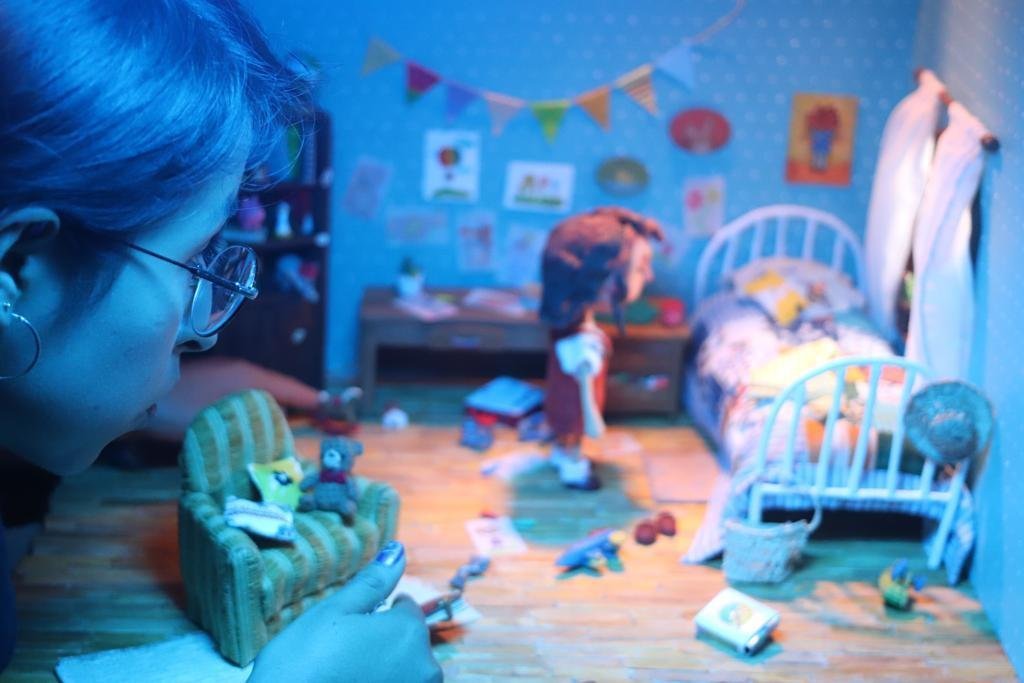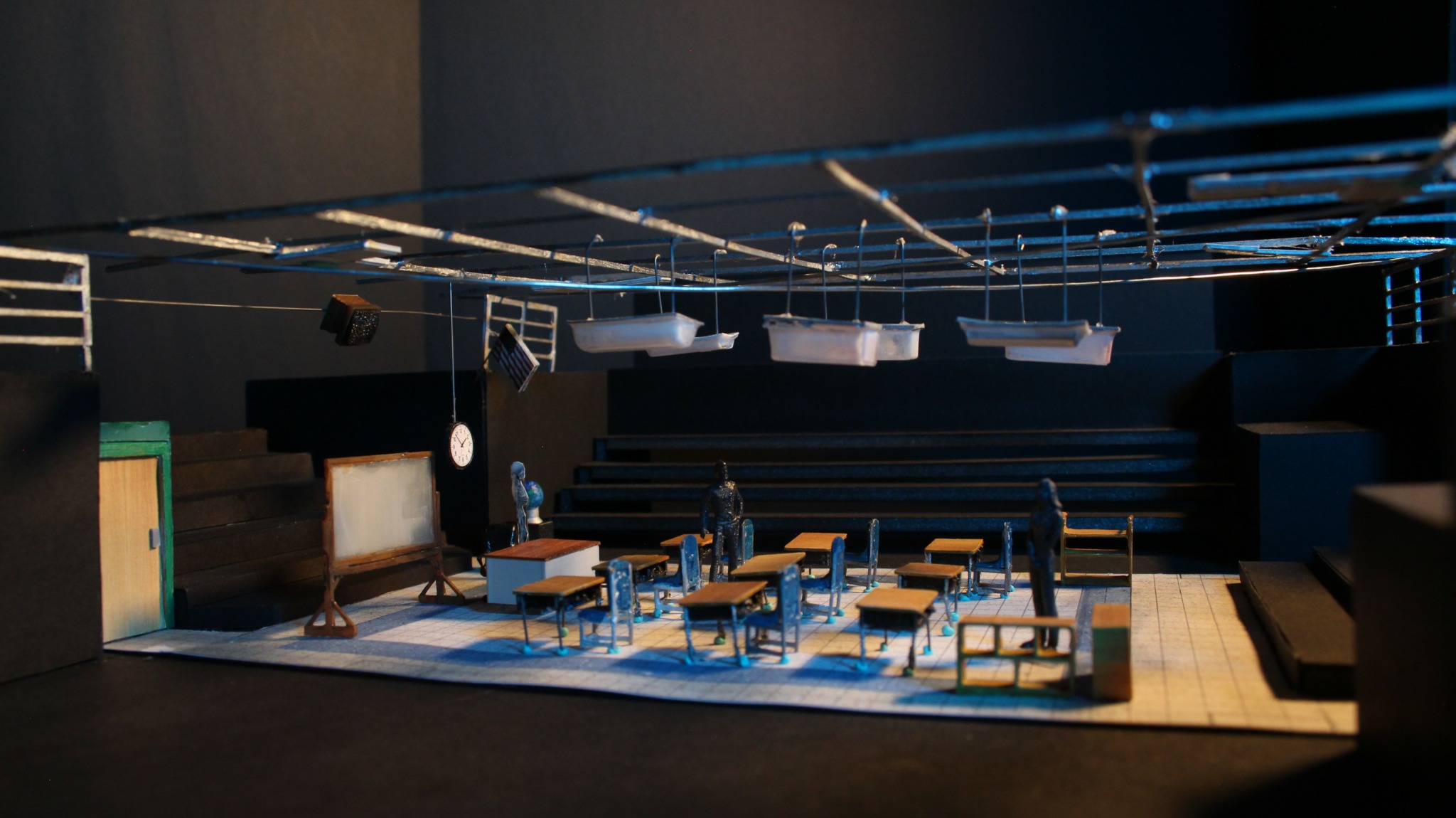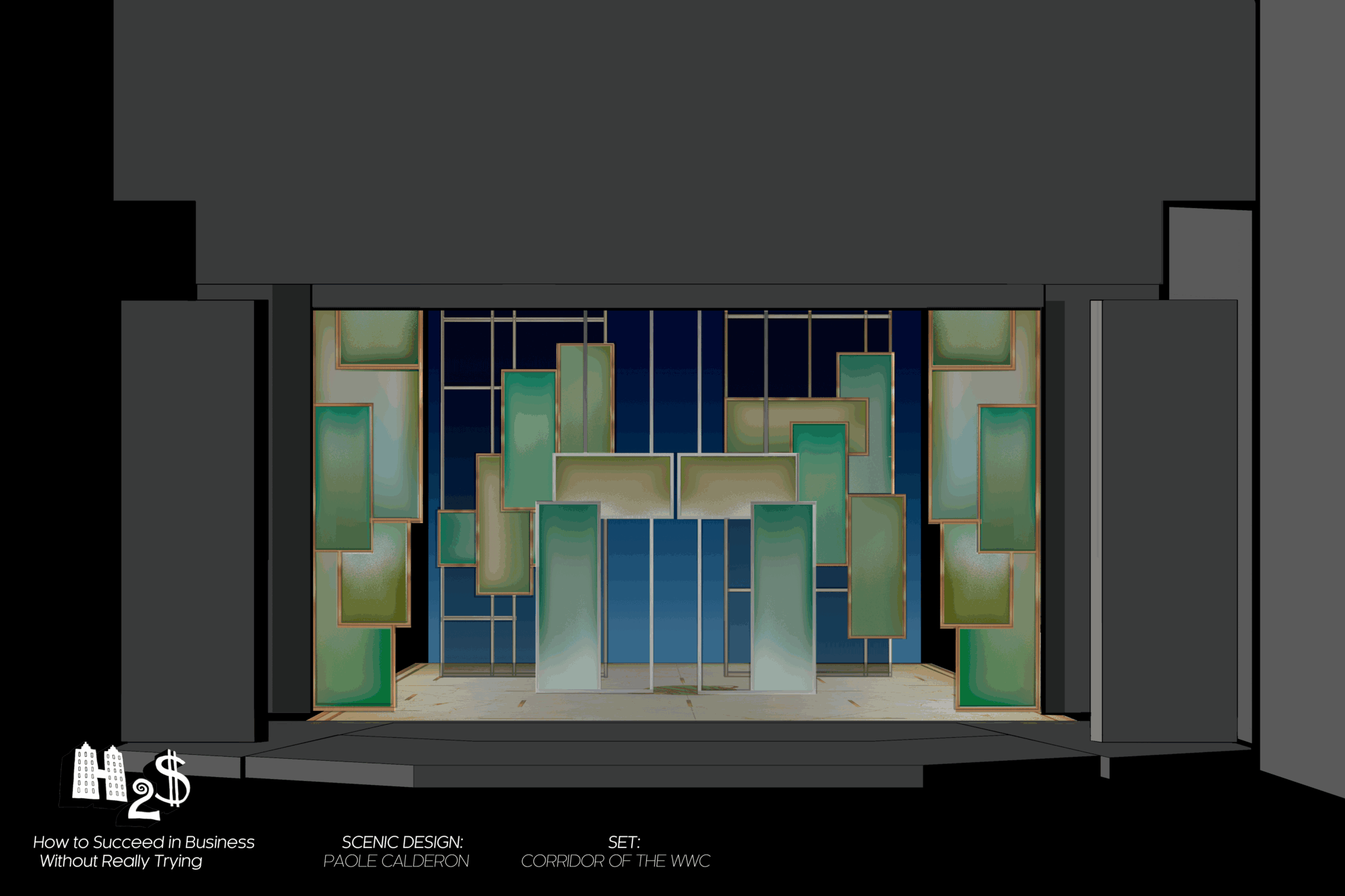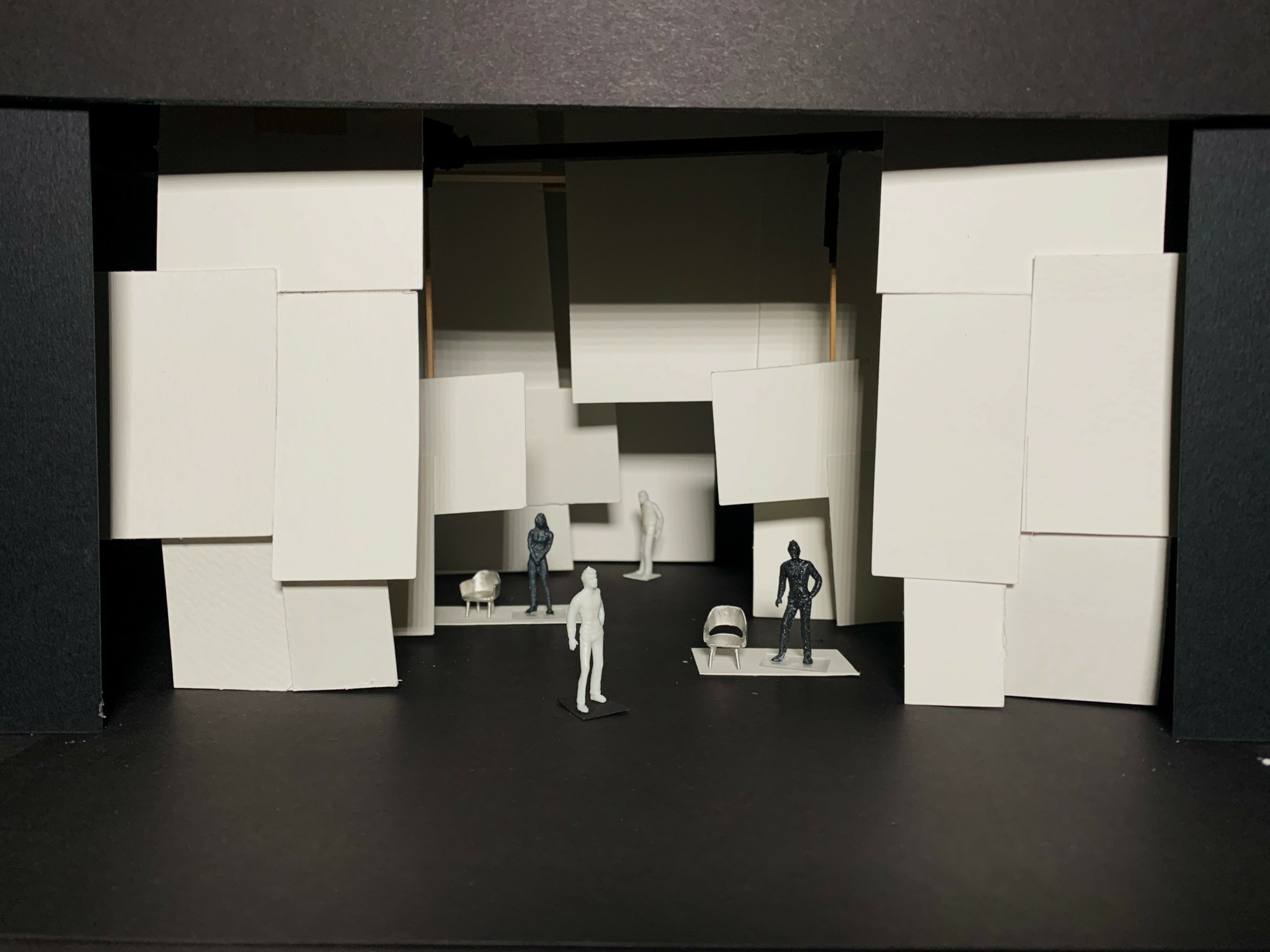We’re excited to introduce you to the always interesting and insightful Paole Calderon. We hope you’ll enjoy our conversation with Paole below.
Paole, thanks for taking the time to share your stories with us today Did you always know you wanted to pursue a creative or artistic career? When did you first know?
I grew up in a small town in Peru, and my earliest memories are rooted in my father’s studio. I remember clearly how it was filled with books on history, architecture, and the lives of great artists. I’d spend hours there, especially when he was working out. As a child, I would leaf through pages, draw, cut paper, and play with any tools he had. I remember my dad’s handmade drawings on those translucent sheets of paper, ones I’d sneak away to use for my own sketches. At the time, my curiosity led me to dig into the influence of the artists’ stories and the amazing pages of several architectural designs. I knew one thing: I needed to create.
This desire to create remained latent. In 2013, I had to choose my undergrad studies, Audiovisual Communication. Halfway through my program, I took a class on art direction for cinema, and that’s when I met Cecilia Montiel, the production designer of The Fox and The Mexican. On the very first day of class, something clicked in me, and I knew this was my path calling. She opened a completely new world of possibilities for me, and I became diligent in learning everything about the art department. I took classes, watched films, and read every book I could find. I wanted to understand every aspect of the department and take any opportunity to learn and practice in any role. Along the way, I discovered many talented women whose work inspired me and showed me that one day I could lead as a production designer, the architect of a story.
I started working professionally on short films, TV shows, and music videos. Currently, I design for plays and musicals, continually reaffirming my passion through every project. I am a dedicated artist who pours heart and soul into understanding the emotions behind each story, supporting the director’s vision, and bringing the message of the script to life.
My journey as a designer has been challenging but incredibly rewarding. It has required resilience: to keep trying, to keep learning, to keep doing it with wisdom and determination. But as long as I continue to feel that same curiosity I had in my father’s studio, researching, reading, and discovering artists and architects, I will keep reaffirming that this is my path and my own self-discovery.

Paole, before we move on to more of these sorts of questions, can you take some time to bring our readers up to speed on you and what you do?
Hi! I’m Paole Calderon, a Peruvian-born Production Designer and Scenic Designer working across film, animation, and theater. I’ve designed for short films, TV shows, music videos, and animated projects, blending analog and digital approaches from handmade props and papercraft to stop-motion and live-action design. I’ve been fortunate to be surrounded by filmmakers designing short films for the Feirstein Graduate School of Cinema in New York, as well as to collaborate with incredible directors in theater including Steven Broadnax III on John Proctor is the Villain, Christopher Campbell on the musical How to Succeed in Business Without Really Trying, and currently working with the musical director Christine O’Grady Roberts on Crazy for You, the fall mainstage production at Penn State.
My journey began in childhood, inspired by my father, an architect who taught me to see the world with curiosity. During my undergraduate studies in Audiovisual and Media, I was inspired by my classes with Cecilia Montiel, a production designer who works for Hollywood productions. My curiosity gradually deepened into a calling to build entire worlds from imagination. I followed and learned from incredible women, including Azul Boreinstein, scenic designer and alumnus of the School of Jacques Lecoq; Grecia Barbiere, a Peruvian production designer with whom I worked as art director on TV shows. Today, I continue learning from scenic designers Milagros Ponce de León and Dan Robinson.
I am the designer of creative minds; directors, storytellers, filmmakers, and screenwriters. My role is to translate their ideas and interests into tangible spaces, collaborating closely with my art team. In film, with Cinematographers to collaborate on how each space will be captured. In the Theater, I work alongside the technical director and lighting designer to consider the look, infrastructure, and movement of the space.
I focus on how the audience will experience each environment. In film, how the set translates the script in the space; In theater, how the set supports performance and storytelling. From the beginning to the end of each project, I surround myself with sketches, drafts, white models, and renderings, my tools to provide directors with a visual and tangible representation, and to help the crew and cast connect with and feel immersed in the story. Whether the world is fiction, reality, or fantasy, I work to make the story and the director’s vision tangible, crafting spaces that bring imagination to life.
What sets my work apart is my sensitivity to the emotional landscape of each story. I am not only interested in how a space looks, but I am also looking for telling the story through how it feels in the space. Sometimes, it carries memory, reveals a message behind, or something about the mood of the character, and how all of this resonates in the spectator’s view long after the scene ends. I approach every project with care, curiosity, and a commitment to visual honesty. Whether designing a set, directing animation, or crafting a prop, my goal is always to bring the unseen parts of a story to life through space, color, texture, and composition.
Beyond theatre and film, I am the creator and director of the animated series Juno, Bike’s Diary, a project very close to my heart. It tells the story of a girl who transforms into a bike, a tale that reflects my passion for stories filled with identity, memory, friendship, and the life of community. The series has been selected for top international markets, including Pixelatl (Mexico), Ventana Sur (Argentina), and the Quirino Awards (Spain).

What do you find most rewarding about being a creative?
I think it is the ability to transform emotion, memory, and invisible truths into tangible, visual worlds that others can feel. My experience allows me to lead my curiosity and let emotions resonate with the audience; there is a magic of reimagining spaces, but it is only possible through the spectator’s view. I am not just creating “sets” or “props”; I am building an emotional environment for an audience.
And what makes me think about what is more rewarding for me is how my creative process reconnects me with my younger self, the girl at my father’s desk, the girl drawing sketches on those translucent sheets of dad’s paper. I am the same girl, fully absorbing stories, designing and dreaming new worlds for each project.

Is there a particular goal or mission driving your creative journey?
Yes, there is a mission driving my creative journey: to one day create my own studio, my workspace where I can invite artists, directors, and collaborators to share ideas, processes, and creative experiences. I imagine myself surrounded by my designs, with my creative process unfolding in a space where I can reimagine environments for different stories. A living, collaborative space where art, curiosity, and storytelling come together. I’ve been especially inspired by Delvin, whose work showed me the power of design to bring stories to life. A living, collaborative space where art, curiosity, and storytelling come together. I’ve been especially inspired by Delvin, whose work showed me the power of design to bring stories to life.
Beyond that vision, each project opens a door to unknown worlds. Every story is a lesson to me, offering new perspectives on aspects of life I’ve never explored. Sometimes this means tackling challenges and joy, such as diving into mid-century style and the design philosophy of 1960s interior design, even without having lived through that era. I felt as if I were traveling back in time while designing the musical How to Succeed in Business Without Really Trying. This constant process of learning, discovering, and sometimes even getting stuck in design is what fuels me.
Above all, I hope this journey leads me to mentor and support future designers; it would be a debt not to share what I’ve learned. This is still a new career, and the path in this field can be challenging. I am grateful for what I’ve learned and committed to sharing that knowledge. I see myself full of energy to keep learning, but I want to create a space where others can find their own voice, just as I’ve found mine.
Contact Info:
- Website: https://www.paolecalderon.com/
- Instagram: https://www.instagram.com/paole.art/
- Linkedin: https://www.linkedin.com/in/paolecalderon/
- Other: https://www.behance.net/paoleart



Image Credits
Personal Photo: Portrait on the set of ACNUR– by Saul Anampa
1. Alba stop-motion short film making-of – Photo by Raul Kawanishi
2. Production photo of John Proctor is the Villain at Pavilion Theatre, Penn State – by Paole Calderon
3. Model photo of John Proctor is the Villain – by Paole Calderon
4. Production photos of How to Succeed in Business Without Really Trying musical – by Vinny Pilone
5. 3D rendering model for How to Succeed in Business Without Really Trying musical – by Paole Calderon
6. How to Succeed in Business Without Really Trying musical White model – by Paole Calderon
7. Portrait by Saul Anampa
9. Still from Juno, Bike’s Diary (pilot) – Created and Directed by Paole Calderon; Illustration by Adriana Choy

